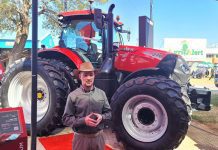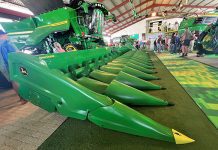Horse breeding is attractive to farmers, but there are many overt and hidden costs – horses need to be fed, stabled and cared for for a minimum of three years before they can be sold, writes Dr Mac.
There are different ways of making money out of horses. The obvious one which appeals to most farmers is breeding.
The first step is to choose the breed of horse. Two are currently ahead of all the others in terms of price: The English Thoroughbred or racehorse, and Warmbloods. Entering the racehorse market is difficult unless you have a background in racing, because joining the Thoroughbred Breeders Association (TBA) involves a lot of red-tape. A glance at the website www.equinesa.com indicates there are horses on the market for over R1 million each. Most of these are Warmbloods and many are specifically trained athletes like A-grade showjumpers or breeding stallions with a remarkable history of performance wins.
Currently, American Saddlers are probably third on the list of high-priced horses, followed by Arabians, Friesians and Quarter Horses. Thoroughbreds, Warmbloods, Saddlers and Arabians have been exported and this always adds to the price as purchasers pay in US dollars or euros.
Choose a breed you like and which is marketable. With some breeds in South Africa, prices of breeding stock are far below what it costs to feed a horse for the three years it takes to become sexually mature. Also look at the marketable age – buyers are usually only willing to buy a foal with an impeccable performance bloodline. Most want a horse that’s already performing, and getting a horse to this stage can take years. An endurance horse can’t enter any rides until it’s four, neither can a jumper or dressage horse. This means keeping, feeding and training for a minimum of three years before training can begin. An average horse eats about 3kg of concentrate and 3kg of hay or roughage a day, depending on size and how much work it’s doing. Horse concentrate currently costs close to R200/50kg, or about R4/kg. Good quality roughage – tef, eragrostis or lucerne hay – is about R40/bale. Most bales weigh around 20kg and cost R2/kg.
It’s cheaper to produce your own feed or use crop by-products like maize stover, oat hay or cob meal. But as with dairy and beef cattle, you need a balance and supplements to bring the protein to above 14%. The minerals required for a lactating mare and growing foal must also be calculated.
Using the above figures, the total cost for feed would be about R18/day or about R540/month and R6 480/year. You’d break even at R19 710 for a three-year-old colt just on feed costs alone. Provided you care for the horse yourself, you can ignore labour costs and you can cut veld grass to use for bedding.
Diesel is expensive and if you’re considering using a tractor and baler, the average input cost per round bale of veld grass for about 14 days’ bedding for one horse is now about R100. If you’re farming with wheat you have to take the straw off the fields in any case – using it as bedding is practical, particularly if its composted and sold to gardeners afterwards.
Other costs are involved in breeding horses. Membership of Studbook is very affordable, but the horse societies often have very expensive membership fees. Then there are registration and transfer fees. A farrier may be needed to keep the hooves trimmed, although many breeders do it themselves. A trim costs R180/horse and this doesn’t include mileage.
Vet’s fees are another running cost. Some societies insist all horses attending shows or endurance rides must have passports and all vaccinations must be done by a registered vet. Unfortunately, vaccinations and deworming medications cost much more than they do for cattle, sheep and goats.
You’ll need to sell a horse you’ve bred for at least R25 000 to make a small profit. But if you choose the breed and breeding stock well, this is possible. Some breeders get over R50 000 for select stock.
E-mail Dr Mac c/o [email protected]. |fw








